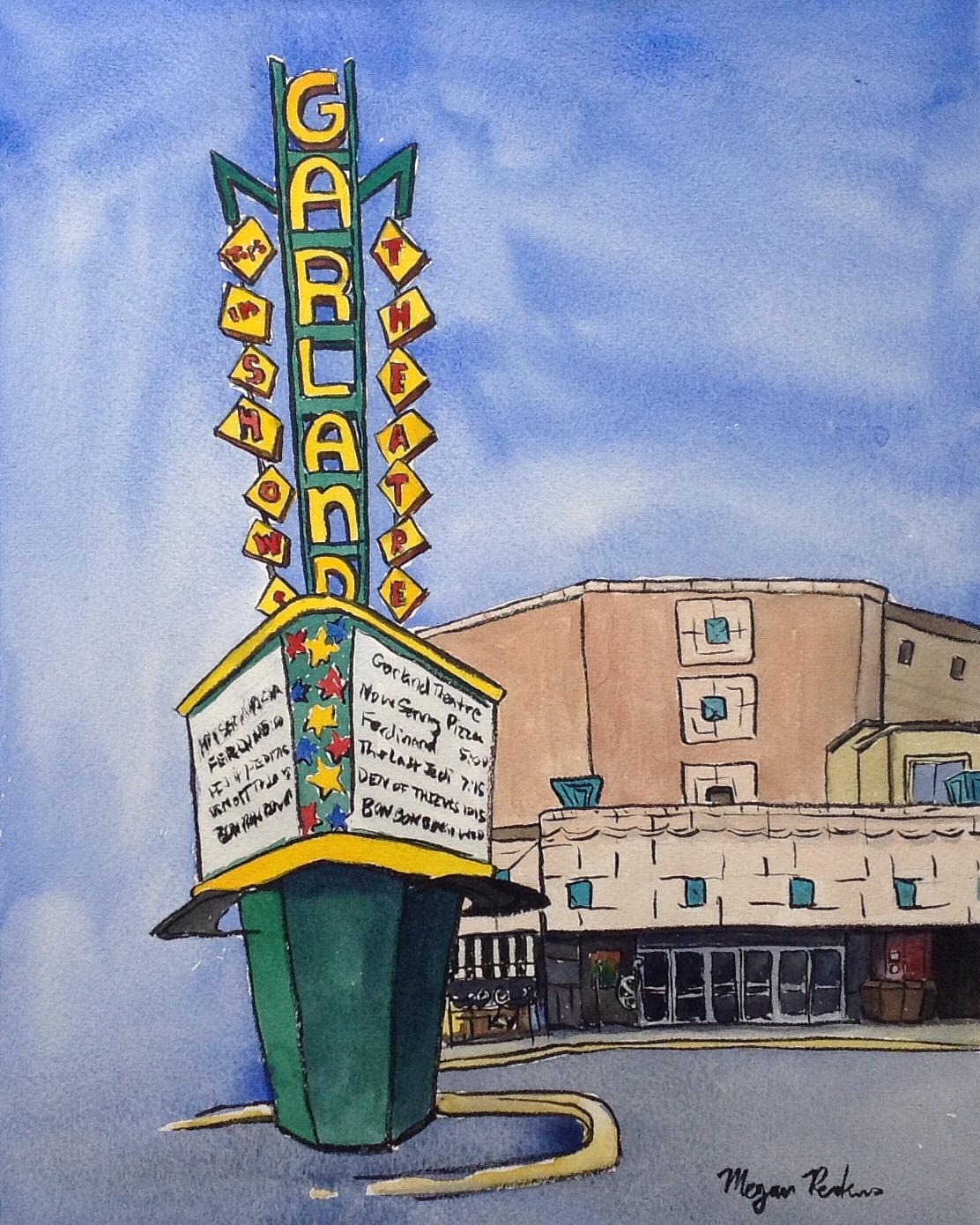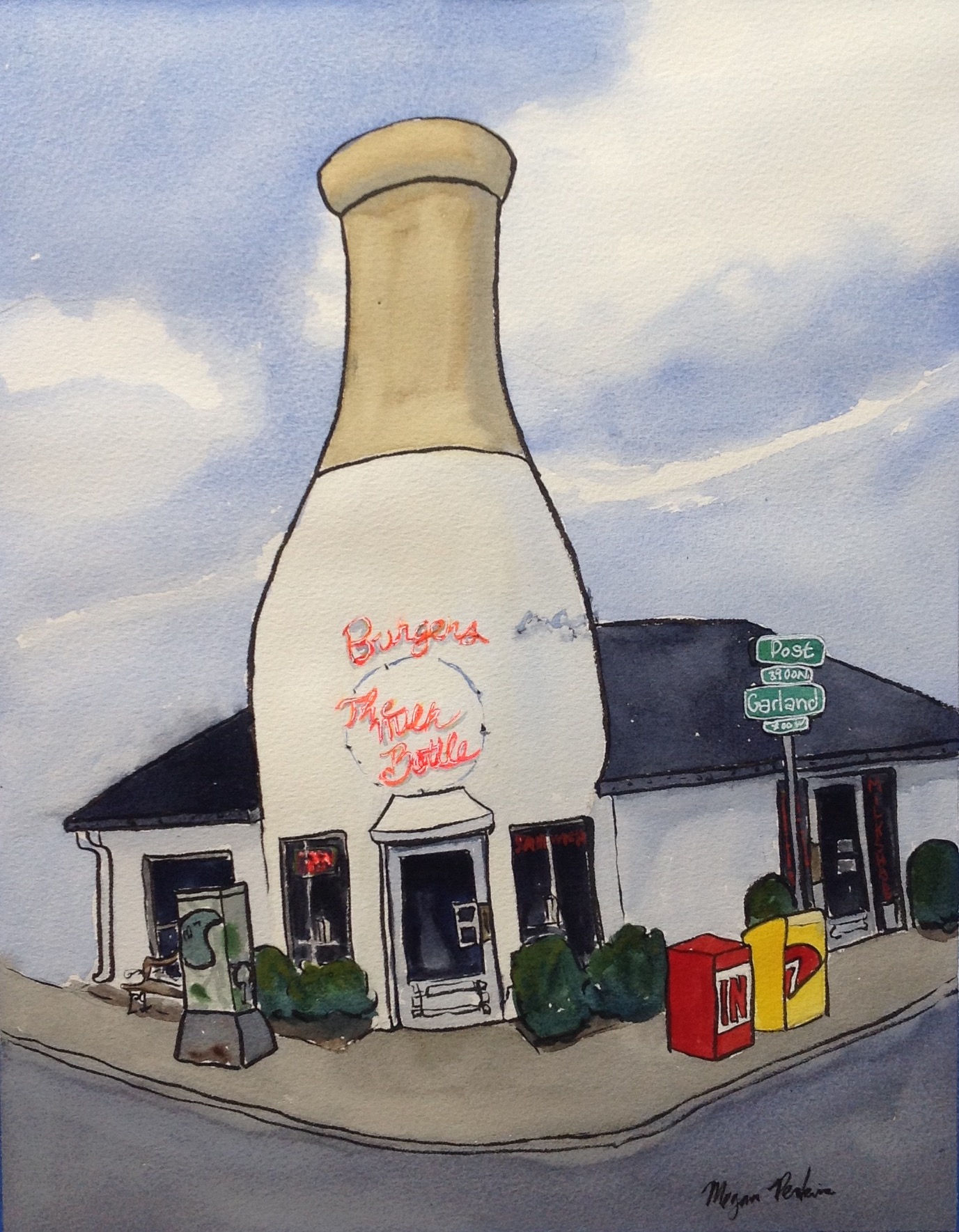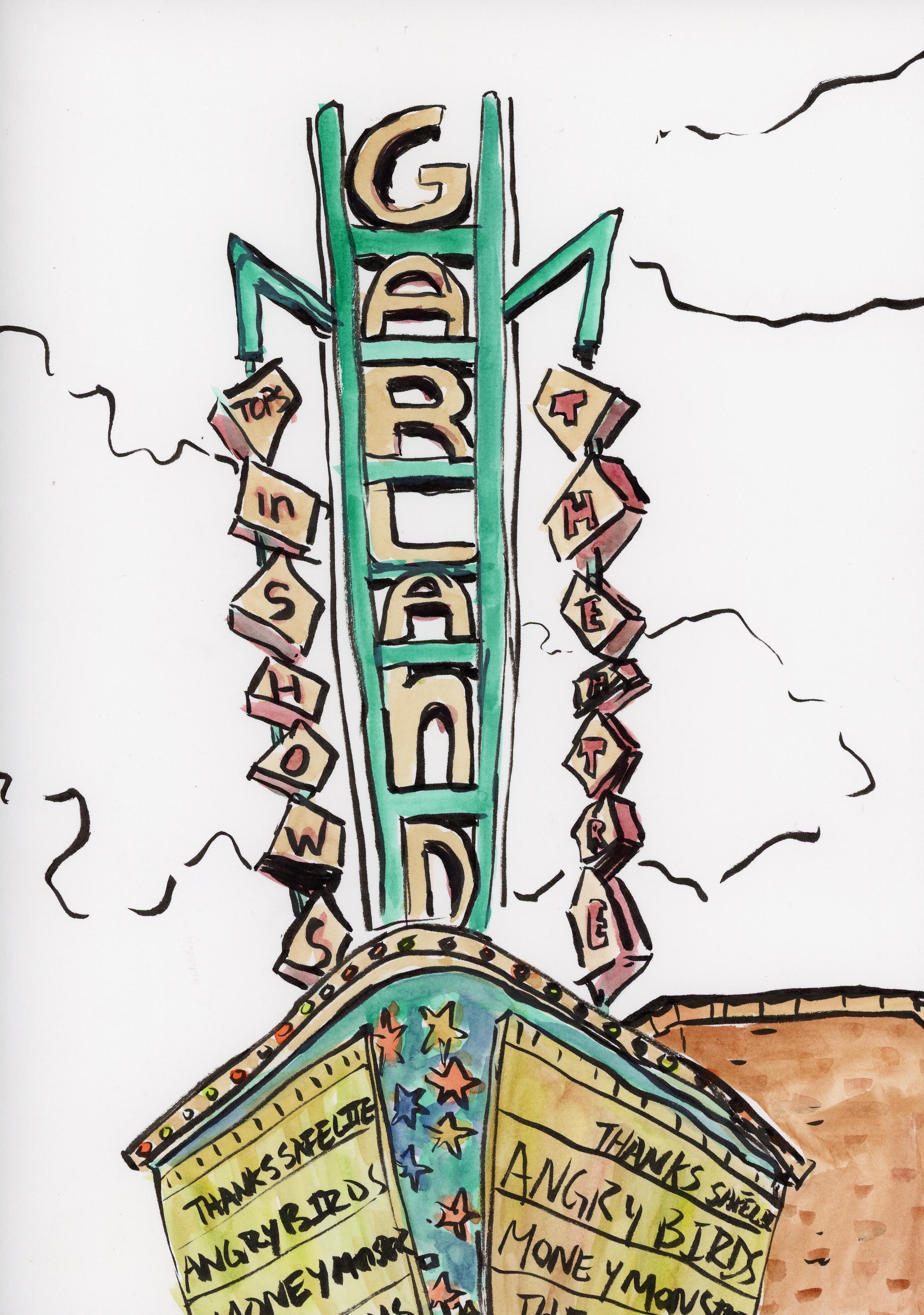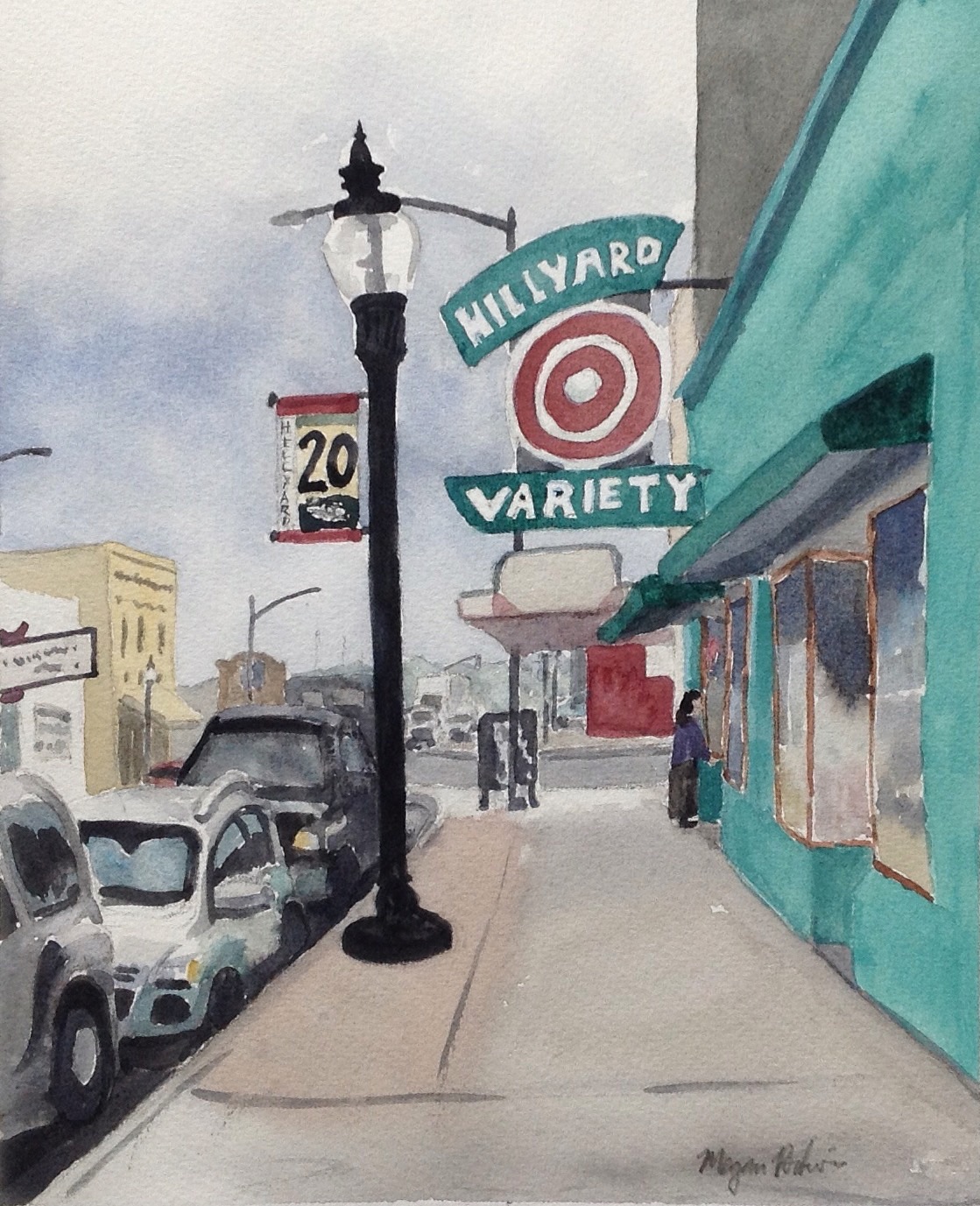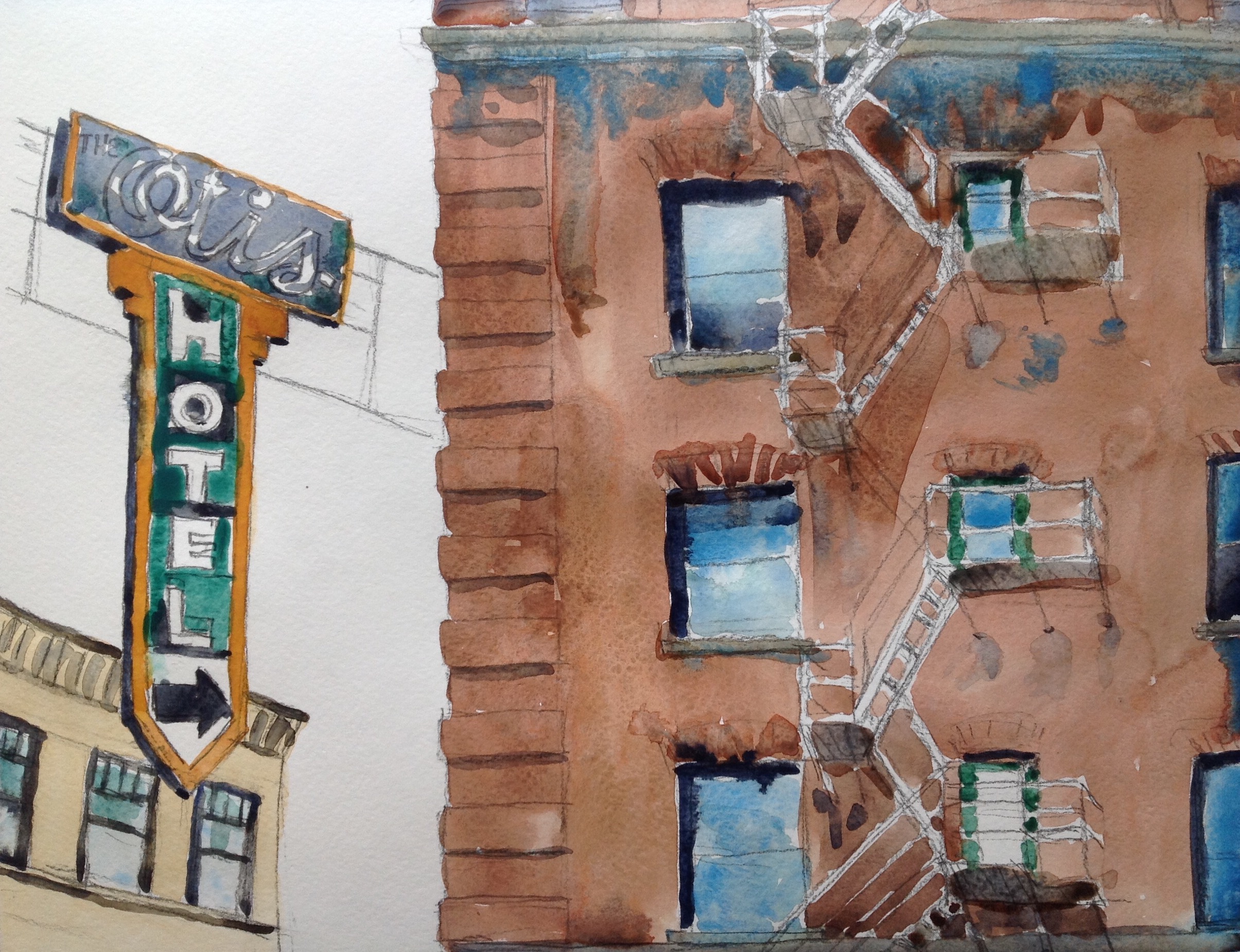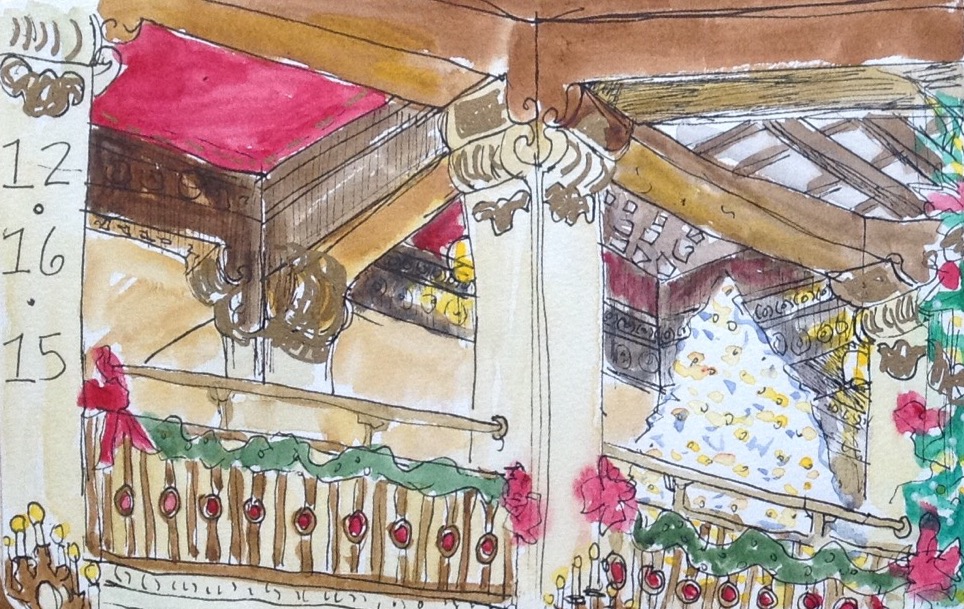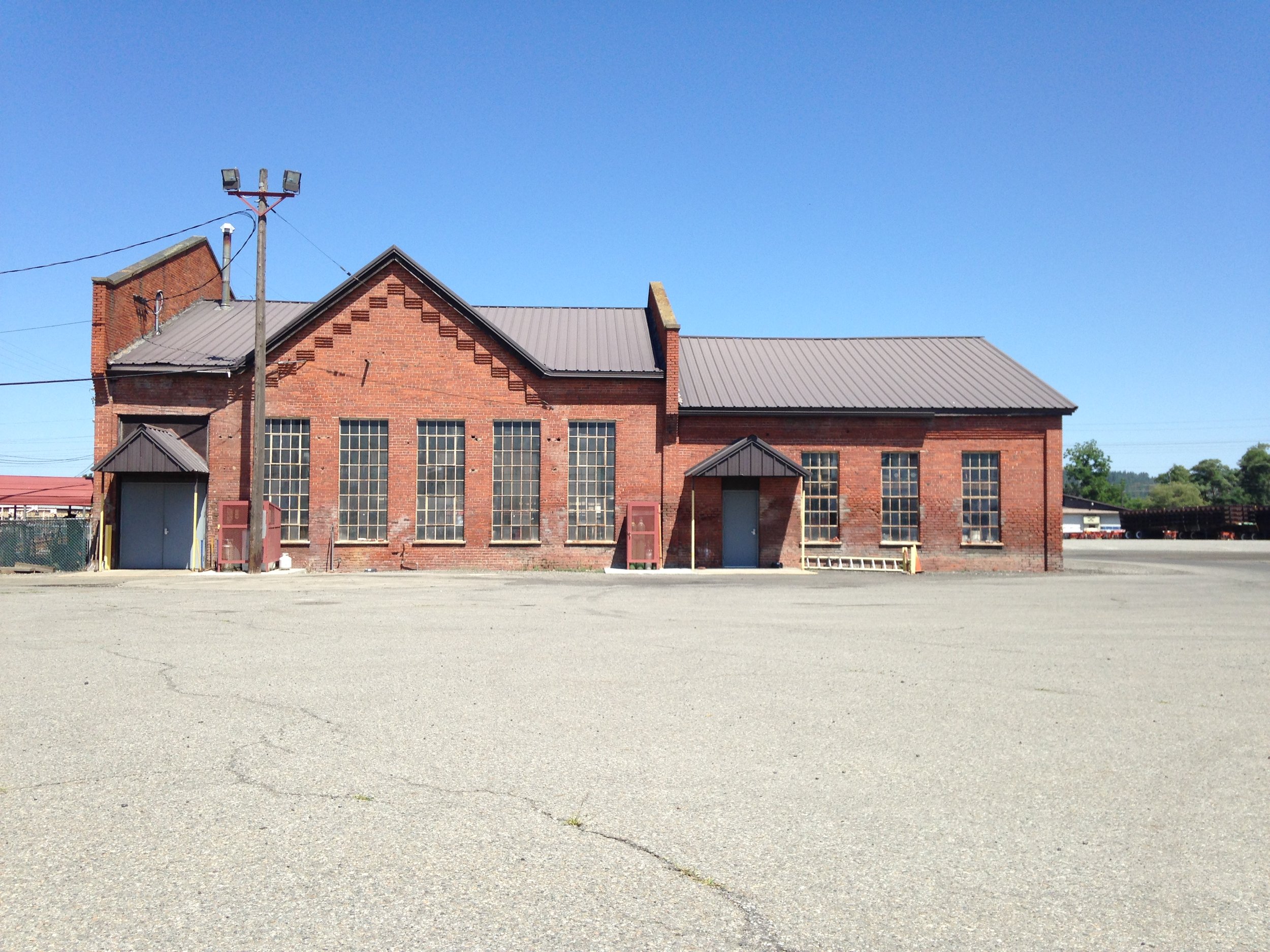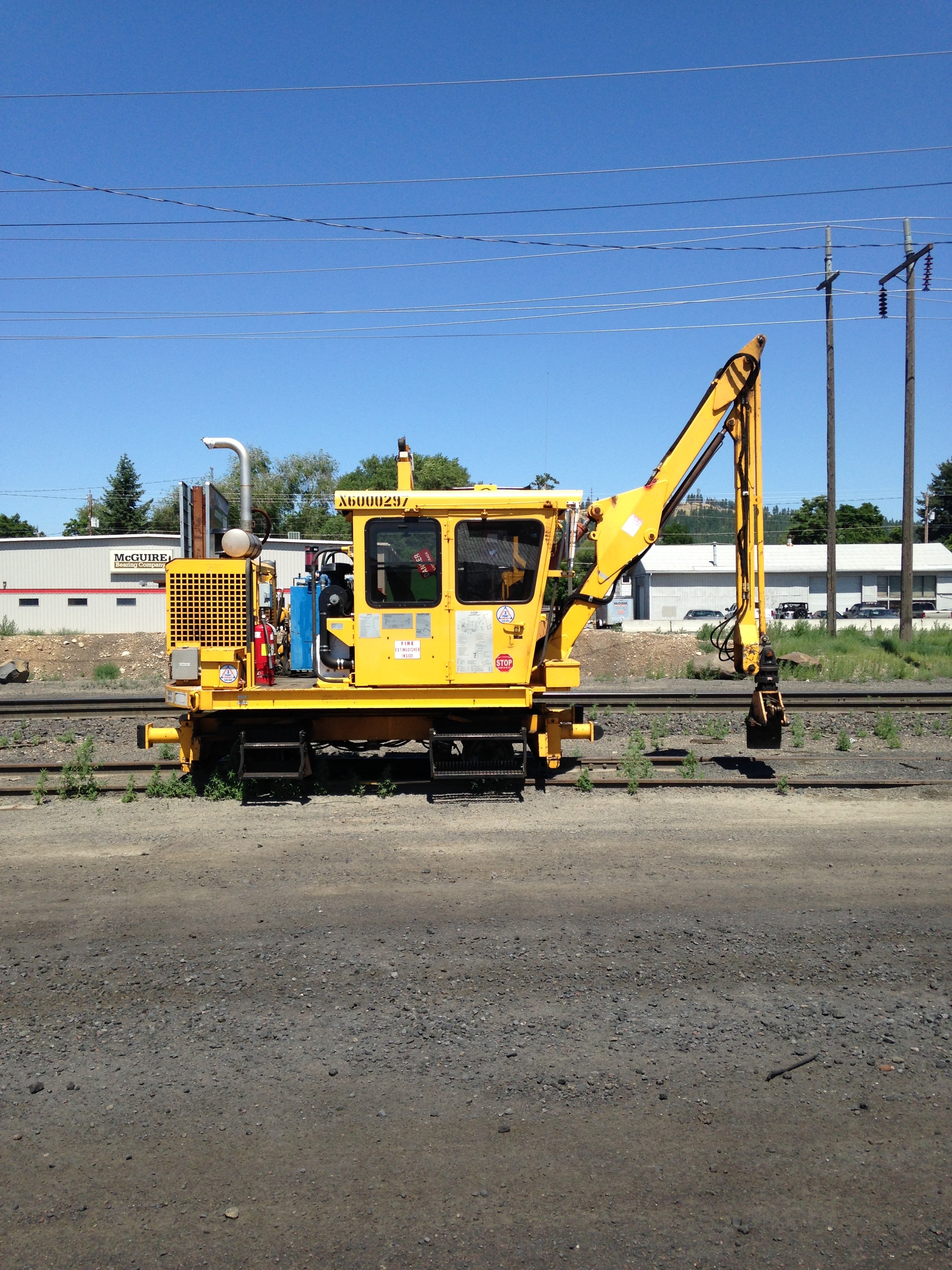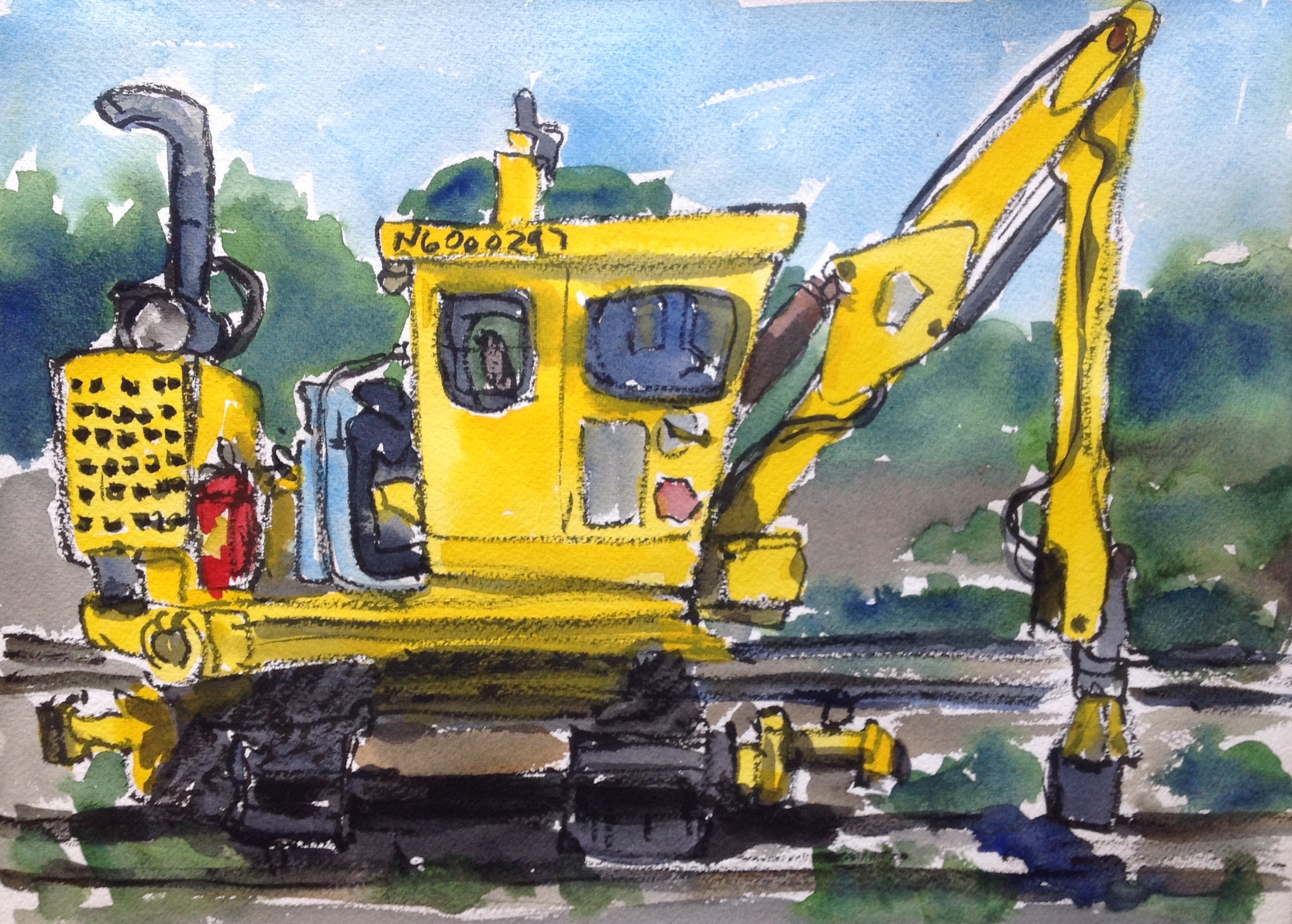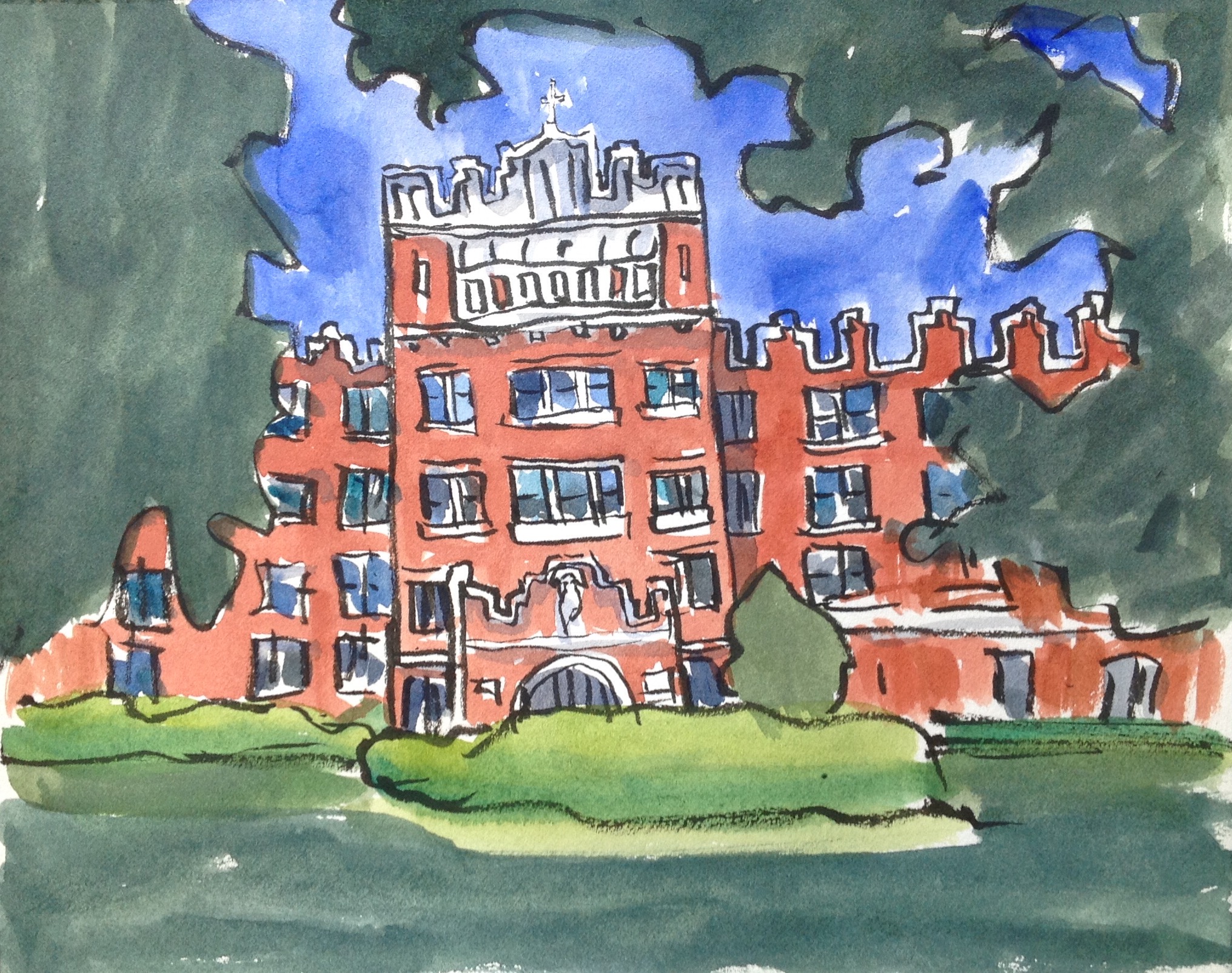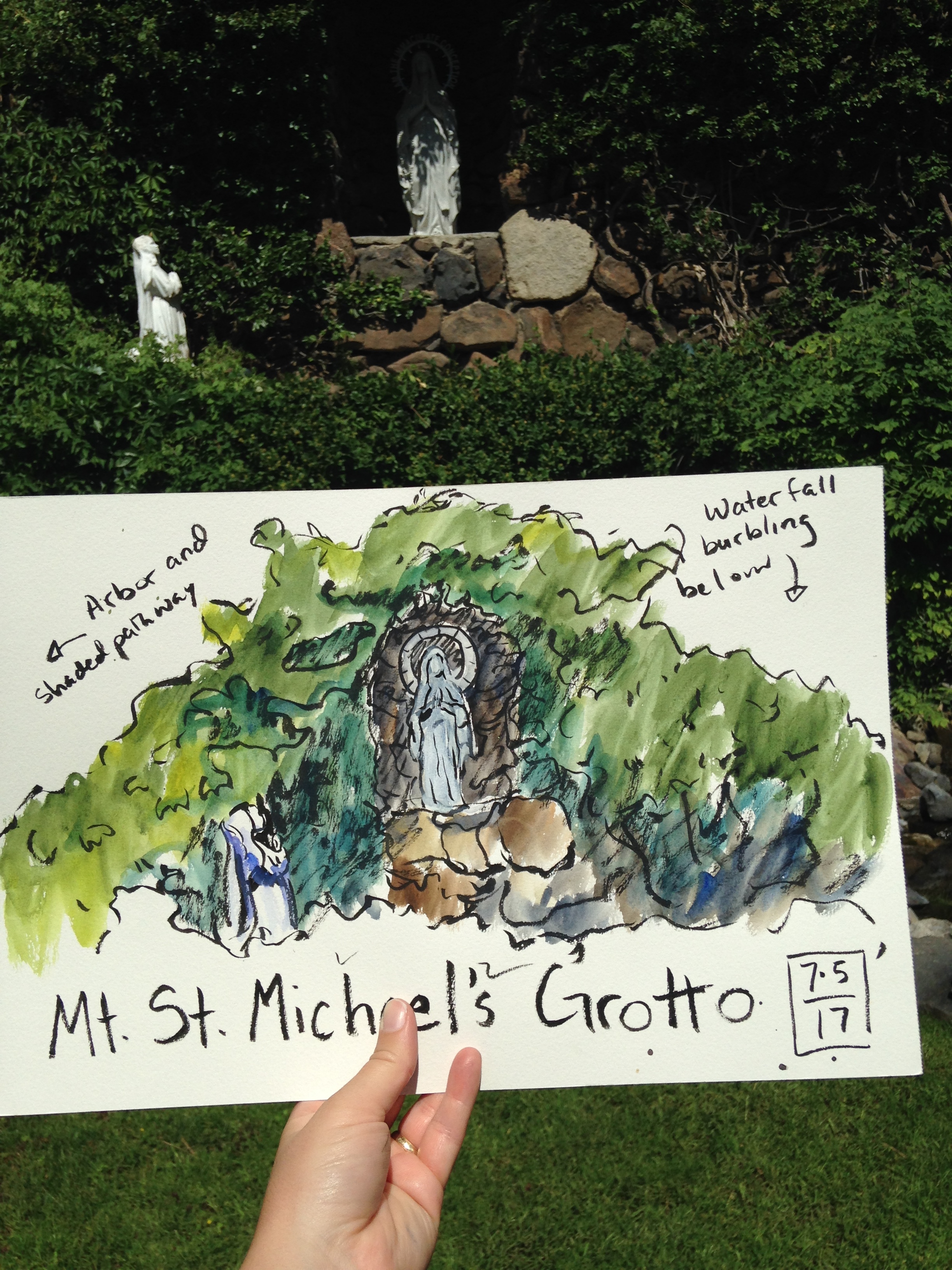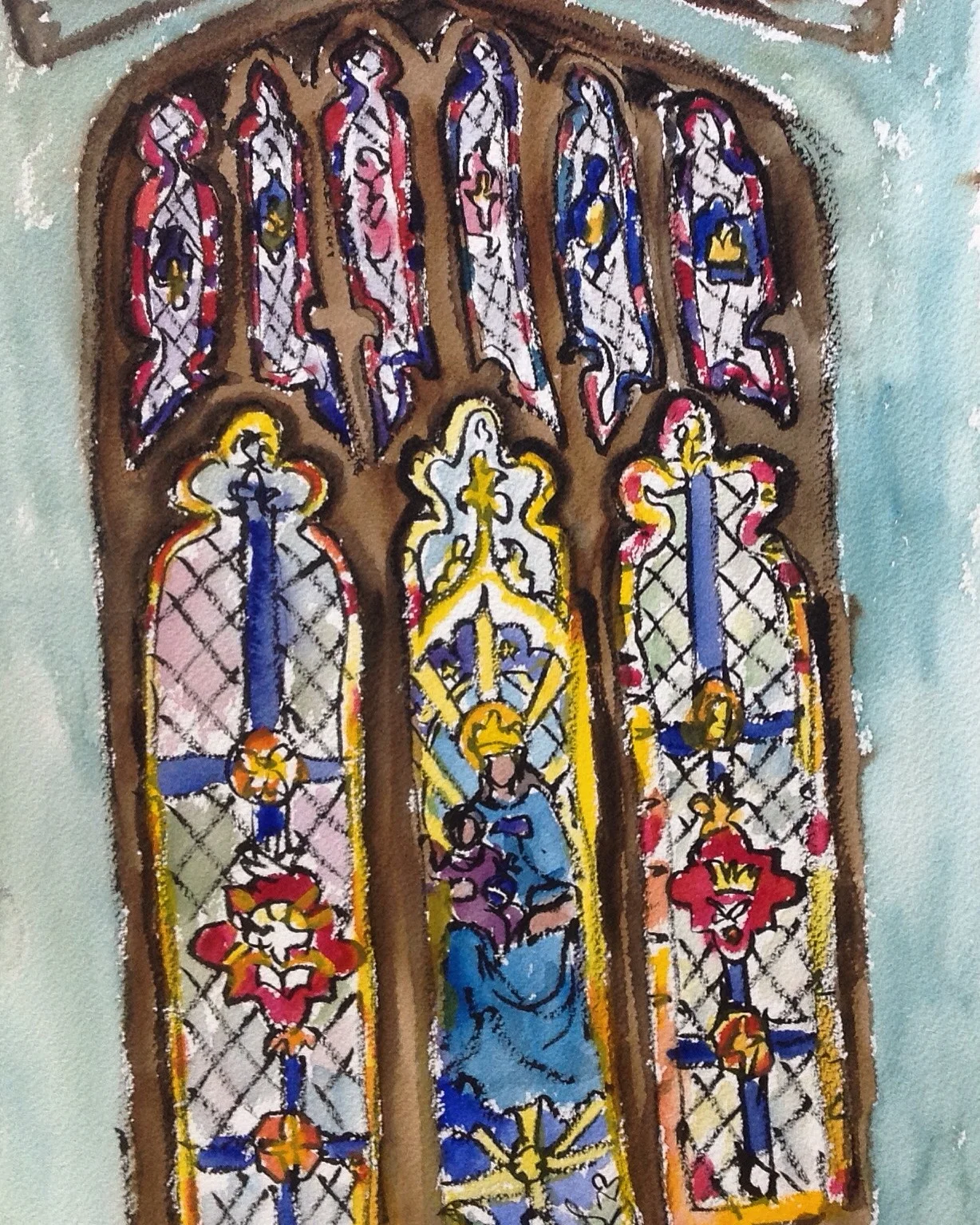The Garland Neighborhood is such a a fun, artsy area. There's been an proliferation of murals-clockwork owls, Vincent Van Gogh, graffiti inspired craft supplies at Sew EZ Too and more. I visit the area often thanks to my love for knitting supplies, Spokane Art School, and milk shakes!
When I saw that the Garland Theater sign getting repainted this summer, I knew I needed to do another painting of it. Vibrant and still kicking after all these years! I've seen several delightful movies there in the past and for my brother-in-law's bachelor party, his best man rented out the theater so that all the family could come and watch movies for a night. It was a lot of fun!
Here's a favorite haunt of mine in the Garland Neighborhood. At one time, it was the Tinman Gallery, a combined bookstore and gallery. Nowadays it houses the Spokane Art School and has frequent shows of local art. The current show is of Maya Jewell Zeller's poetry, illustrated by Carrie DeBaker. Stop by sometime and take a look!
Mary Lou's Milk Bottle is not the only "Milk Bottle" shaped building in town (There's another one downtown, not far from I-90.), but this one serves milkshakes, burgers and fries. I think they have the best milk shakes in town (But then, I like mine so thick that it is a challenge to suck it through the straw.). Who do you think has the best milkshake in town?
Flashback Friday! These two paintings were done on location on a hot summer afternoon on Garland. Man, I’m looking forward to sunshine and short sleeves!
Here you can see that the paint job is much more faded in the theater sign. Oh for sunny summer days!
